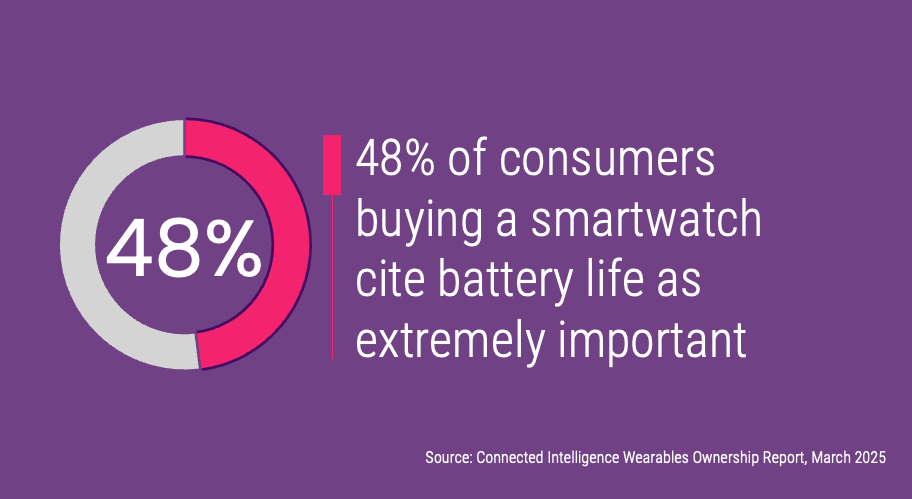
OnePlus Watch 3 launches but…
The Watch 3 has launched, as expected. But what wasn’t expected is a significant change in price. When OnePlus announced the new smartwatch a few months ago, it was positioned as a $329.99 device. Now it’s $499 – a $170 price increase. There’s no word from OnePlus as to why the price has increased by over 50%, but a fairly safe bet is that tariffs caused the change (currently set at 145% for China). OnePlus was in a tricky situation: while many other manufacturers were able to stockpile devices in the US prior to the tariffs starting, OnePlus had a manufacturing problem that we mentioned before (“Meda in China”). As we commented at the time, that was a costly mistake that meant abandoning the first runs of the watch and having to change the manufacturing set up. Now it appears that it is an even more costly error due to the delay.
The Circana Take:
- We don’t like to be (too) blunt but… the OnePlus Watch 3 is dead in the water in the US at this price point. It is $150 more expensive than a Pixel Watch or a Samsung Galaxy Watch with no clear differentiation (to be generous). Further, without a large loyal base of OnePlus smartphone owners in the US, there’s little reason for consumers to consider it.
- This is the first tariff impact we’ve seen in the smartwatch category. It won’t be the last, but stockpiles will buy other manufacturers some time.
- On Friday evening, the US Administration paused tariffs on electronics sourced from China. That could buy OnePlus a reprieve… but it is likely to be a short-term reprieve at best.
Pixel Watch rumors
Google I/O is on the horizon so – inevitably – the rumors are swirling. From a smartwatch perspective, 91mobiles has published claimed renders of the new Pixel Watch 4 that show a slightly thicker watch (14.3mm compared to the current 12.3mm) with the belief that the extra space is to accommodate a bigger battery. That makes some sense: the original Pixel Watch was plagued with poor battery life but since then Google has significantly improved the battery consumption and it’s not really too much of an issue now. There could be new sensors in the larger case instead, but we’ll have to wait till Google I/O for more details.
The Circana Take:
- Battery life is an ongoing fixation for most manufacturers as they chase after Garmin which offers an industry leading 7+ days. But, we maintain, it’s no longer a practical target. Consumers get into the habit of charging every day (or night). Fast charging is key, as long as the battery can easily survive one day of heavy (think GPS active) use.